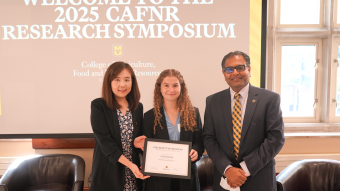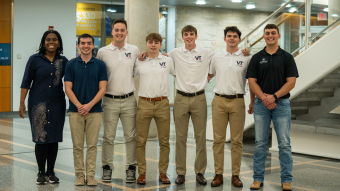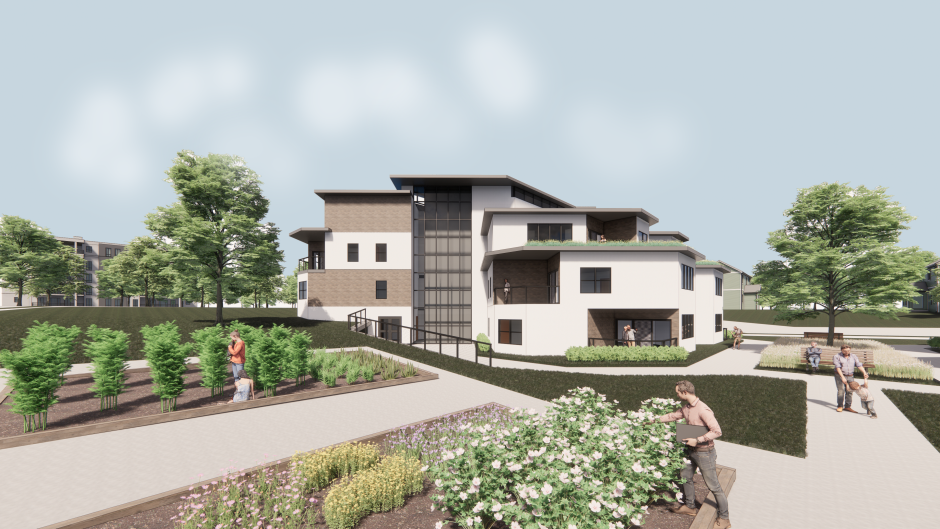
April 19, 2022
Contact: Eric Stann, 573-882-3346, StannE@missouri.edu
On April 22-24, 11 undergraduate students will represent the University of Missouri in the 2022 U.S. Department of Energy Solar Decathlon Design Challenge. Split between two teams of five and six students, they are among 55 finalist teams from 38 universities who will be competing during the multi-day event at the National Renewable Energy Laboratory in Golden, Colorado.
The two student teams, led by Emily Kaphengst and Lyndsey Gerbec, will pitch their sustainable building designs to industry experts in the Attached Housing Division and the Multifamily Housing Division. Their collective goal is to create a net zero energy design, including the building, site, materials and construction.

Kaphengst, the leader of the team competing in the Attached Housing Division, is a senior majoring in architectural studies with an emphasis in interior design. After being introduced to the competition through her construction documents course, Kaphengst joined in hopes of learning more about the connections between sustainability and architecture.
“I think it’s great that we have this opportunity to work closely with a mentor and our faculty on a project that is a little bit more real life than the classes we take,” Kaphengst said. “I feel like I’ve learned so much and I’ve actually been able to take what I learned in my internship and school and put it all together for one large project. It’s pretty great.”
Using the design from her thesis project, Kaphengst and her team adapted it to support sustainability by using solar panels, passive heating and cooling strategies, a stack effect in the central circulation and a geothermal HVAC system, all of which produce a net-zero energy system.
“Residential and commercial buildings have become some of the biggest consumers of energy, so if we are able to bring our energy usage down in that aspect then we can make a huge impact on keeping the planet cleaner,” Kaphengst said.
Using three-dimensional modeling software and other programs, the architectural studies students can create digital renditions of their net zero designs for exhibition at the event.
“The environment is deteriorating but technology is progressing, so now that we have the technology that helps us find a way to lower our energy usage, it is so important that we take advantage of that,” said Gerbec, the leader of the other finalist team from MU.
Gerbec is also a senior majoring in architectural studies, planning on obtaining a sustainability certificate with her work in the design challenge.
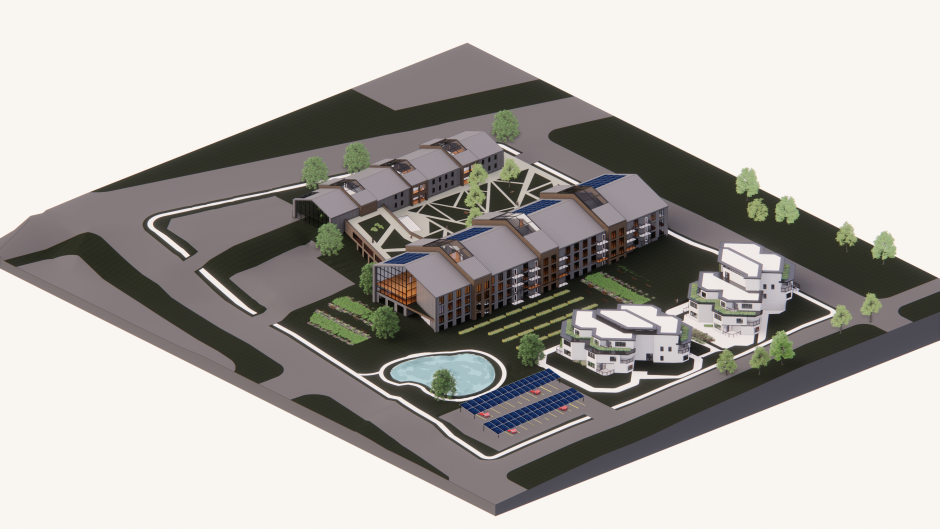
Competing in the Multifamily Building Division, Gerbec and her team are creating a building that is partially commercial and mostly residential, incorporating sustainable concepts such as rainwater collection, solar panels, cross ventilation, green roofing and indoor botanical gardens.
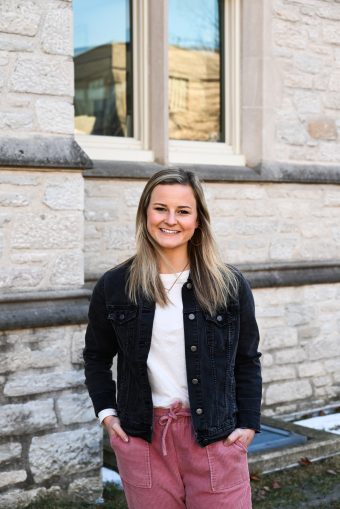
“The design challenge is helping me get great scholarship money for graduate school, and it’s helping me excel in my knowledge of architecture,” Gerbec says. “One thing that I absolutely love about architecture that makes me want to promote it to everyone, is the fact that everything you’re learning in your classes, you’re actually applying in these hands-on projects: building, using 3-D models and especially with the Solar Decathlon.”
Gerbec recently received an internship offer from HOK, a global design, architecture, engineering and planning firm, in Kansas City as a sustainability student intern. She credits her mentors, courses and work in the design challenge for her outstanding success as an undergrad and is planning on continuing her education at graduate school.
“With our design being a culmination of the work that I have done here at Mizzou and the effort that I have put in, I think it will be a really great reward to see it all come to life,” Gerbec says. “A big takeaway is that I have a lot more capacity within myself than I realized, and I am much more prepared for the real world than I originally thought I was.”
After the presentations and a question and answer session with the judges, first place winners will be chosen in each division with one grand winner selected in each of the residential and commercial categories.

